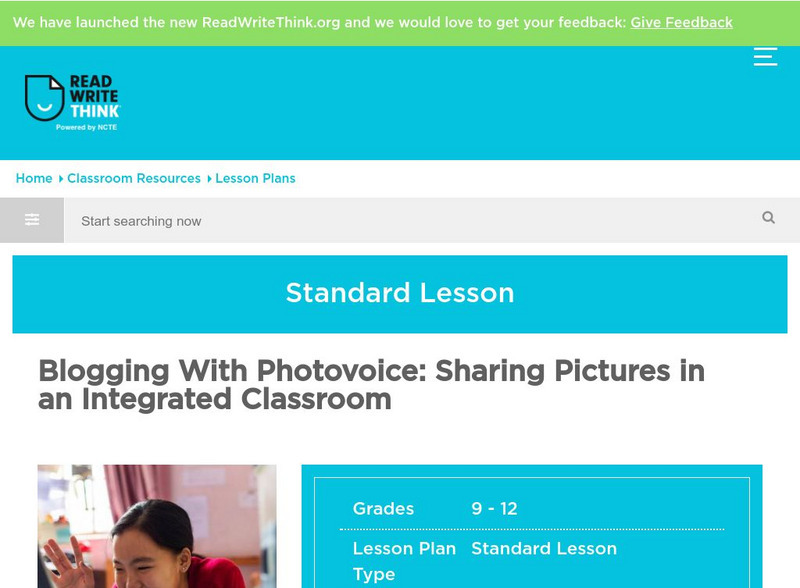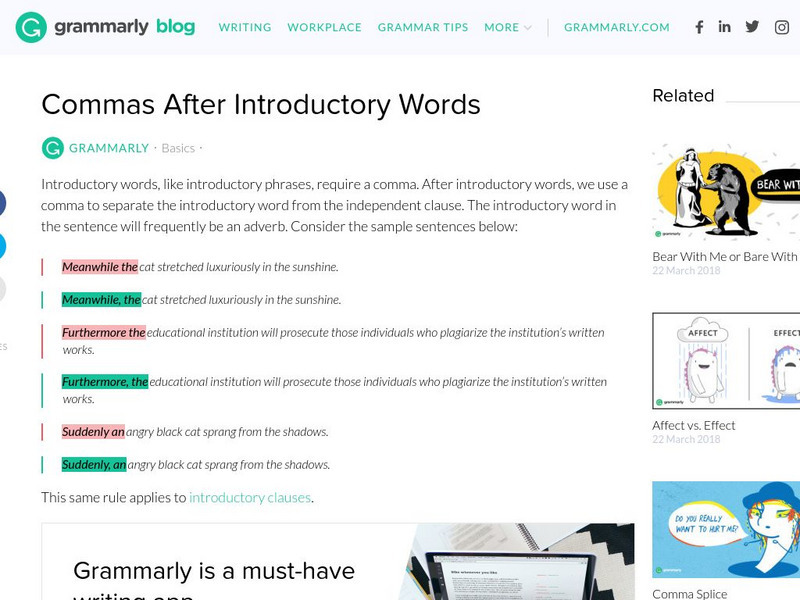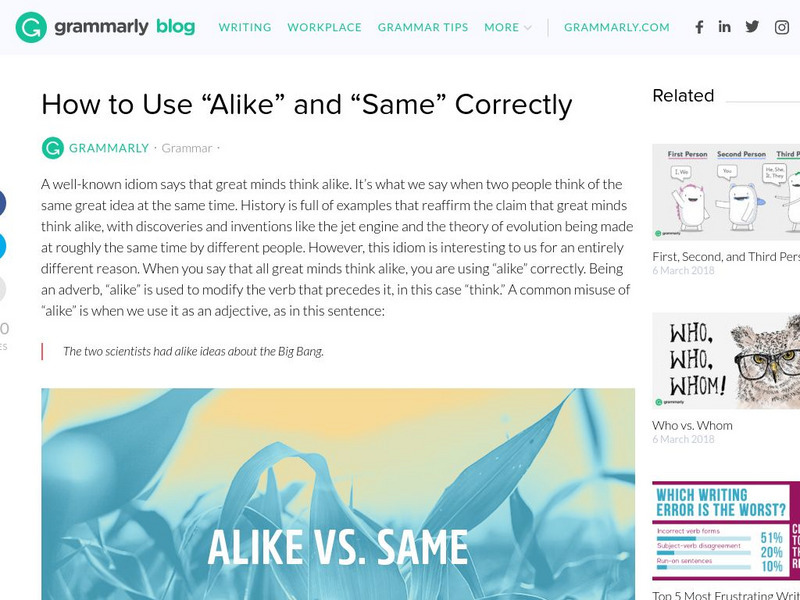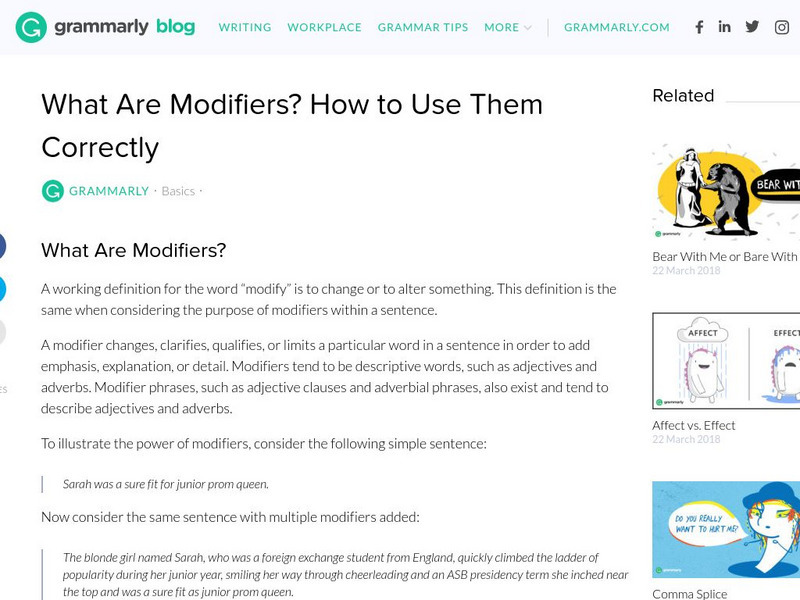Hi, what do you want to do?
New York State Education Department
TASC Transition Curriculum: Workshop 11
You'll C-E-R a difference in classroom achievement after using a helpful instructional activity. Designed for economics, civics, government, and US history classes, participants practice using the CER model to craft arguments about...
New York State Education Department
TASC Transition Curriculum: Workshop 10
How have educational standards evolved? Educators of adults examine expectations in the 10th workshop out of 15 to better determine how standards have grown. Participants respond to a variety of sample questions to determine how they...
Transforming Education
Growth Mindset Toolkit
A nine-slide presentation provides educators with practical ways they can help young people develop a growth mindset, a key competency in social-emotional learning.
Other
National Council of Teachers of English: Teaching With Blogs
Reading and writing texts online are basic skills that students need to be literate citizens in today's world. Teaching with blogs provides the opportunity to engage students in both of these literacy activities, and the strategy has the...
Other
Tech Learning: Introduction to Blogs and Blogging
This article introduces the concept of blogs, gives links to blogs that deal with topics in education, ideas for using blogs for student writing and information on setting up your own blog. After reading this article you should be able...
ReadWriteThink
Read Write Think: Blogging With Photovoice: Sharing Pictures in Integrated Class
Photovoice is a technique that has participants take photos in response to a prompt, reflect on the meaning behind three of their photos, and share the photos to find common themes. It is an ideal strategy for all forms of classrooms,...
Other
Fanschool: Blogs for Teachers and Students
Fanschool provides a safe and simple blogging platform for students in both elementary and middle schools. Teachers have administrative control over all student blogs and accounts, and blogs are only viewable by classmates and the...
ReadWriteThink
Read Write Think: Blogtopia Blogging About Your Own Utopia
Contains plans for six 50-minute lessons that ask students to blog about their own Utopian societies after reviewing some Utopian literature. Can be used in conjunction with Sir Thomas More's "Utopia," the writings of the New England...
Grammarly
Grammarly Blog: All About Transition Words
Types of transition words and how they can be used to make writing more fluid.
Other
Mainland Aggregates, Ltd: Many Uses of Sand
This infographic includes a calculation for how many grains of sand are on the Earth. It discusses what sand is, its history of use by humans, and its many uses in modern times.
Other
Appalachian State Univ.: Journal Reprint: Internet and Blog Publishing [Pdf]
Information, ideas, and examples of how technology can be used in a Social Studies classroom. Although designed for a fourth-grade classroom, many ideas in this article are applicable and adaptable for various grade levels and other...
Other
University of Wisconsin Stout: A Rubric for Evaluating Student Blogs
A rubric that can be used for assessing students' contributions to a blog.
Other
Quinnipiac University: Blogging Across the Curriculum
This online course was created for the Interactive Digital Design Department at Quinnipiac University and is designed to examine how weblogs are being used in academia. The various pages cover the basics of weblogs, how to use Blogger...
Sophia Learning
Sophia: Introduction to Blogging
This lesson will help students understand what a blog is and how they are used to communicate online. It defines blogging and its uses and offers a YouTube video that explains what blogs are and how they work.
Grammarly
Grammarly Blog: Dashes
This page focuses on the rules for the use of dashes. Explains what a dash is, what it does, and the three formats of dashes (em, en, and the double hyphen). Examples are provided with the "dash" used in different contexts.
Grammarly
Grammarly Blog: Commas After Introductory Words
This Grammarly Handbook resource explains how to use commas after introductory elements. Numerous examples of commas after introductory phrases, introductory clauses, and introductory transitions are provided in this resource.
Grammarly
Grammarly Blog: Parentheses and Brackets
Rules and examples for using parentheses and brackets correctly in sentences.
Grammarly
Grammarly Blog: Quotation Marks: Rules How to Use Them Correctly
This page focuses on the rules for using quotation marks correctly including general rules, when to use quotation marks; run-in and block quotations; quotation mark rules: quotations and capitalization, quotation marks and other...
Grammarly
Grammarly Blog: How to Use "Alike" and "Same" Correctly
An explanation with examples of using the words "alike" and "same" correctly in sentences.
Grammarly
Grammarly Blog: Adjectives and Adverbs What's the Difference?
This blog article focuses on adjectives and adverbs including their purpose and the confusion between them. It offers links pertaining to adjective and adverb use and misuse.
Grammarly
Grammarly Blog: Articles
This page explains what articles are including the definite article "the" and the indefinite articles "a" and "an" and provides examples of their use and exceptions for the use of "a" and "an". It explains the rules for the uses of...
Grammarly
Grammarly Blog: What Are Modifiers? How to Use Them Correctly
This page focuses on modifiers including what modifiers are -- adjectives, adverbs, and descriptive phrases and clauses; misplaced modifiers and how to correct them; and limiting modifiers and how to use them. Examples are provided.
Grammarly
Grammarly Blog: Apostrophe Rules
This page focuses on the rules for the uses and misuses of the apostrophe including contractions and omissions, possessive nouns, possessive pronouns, how to write joint possession, plurals, apostrophes with surrounding punctuation, and...
Grammarly
Grammarly Blog: Double Negatives: 3 Rules You Must Know
This page explains the 3 rules for double negatives: each subject-predicate construction should only have one negative form, a double negative is a non-standard sentence construction that uses two negative forms, and standard English is...

























